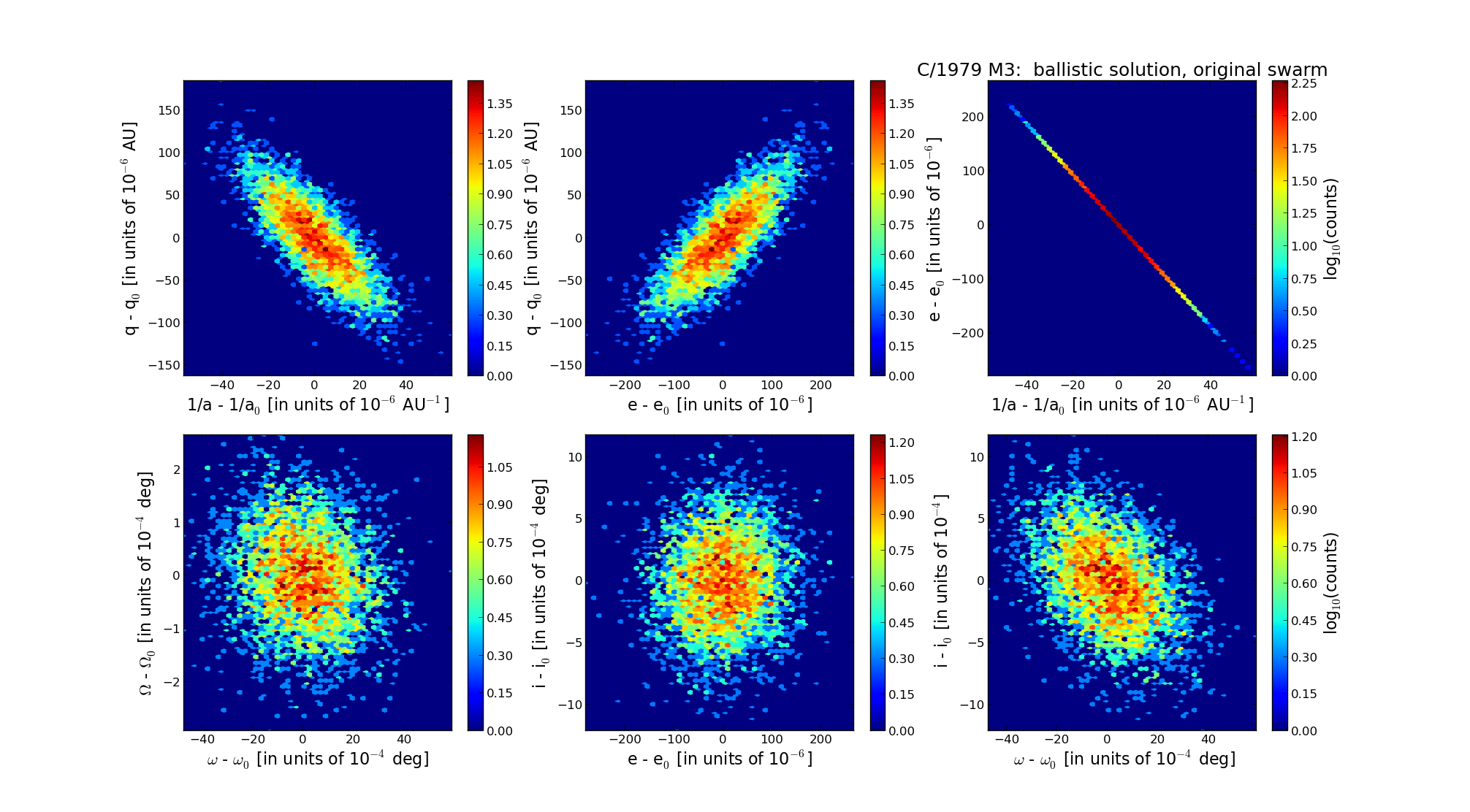| Solar System Dynamics & Planetology Group |
 |
C/1979 M3 Torres |  |
| Solar System Dynamics & Planetology Group |
 |
C/1979 M3 Torres |  |
| number of observations | 34 |
| number of residuals | 64 |
| data interval | 1978 Aug. 23 — 1979 Oct. 23 |
| rms [arcsec] | 1.34 |
| orbit quality class | 1b |
| Epoch (TT) | 19790726.0 | = JD 2444080.5 |
| time of perihelion passage (TT) | 19790715.404937 | ± 0.011173 |
| perihelion distance | 4.68691254 | ± 0.00004288 |
| eccentricity | 1.00106133 | ± 0.00006640 |
| argument of perihelion [deg] | 10.101298 | ± 0.001499 |
| longitude of the ascending node [deg] | 293.136635 | ± 0.000082 |
| inclination [deg] | 92.178173 | ± 0.000337 |
| inverse semimajor axis [10-6 au-1] | -226.44 | ± 14.16 |

| Epoch (TT) | 16740614 | |
| time of perihelion passage (TT) | 19790715.600960 | ± 0.011067 |
| perihelion distance | 4.69146981 | ± 0.00004325 |
| eccentricity | 0.99980792 | ± 0.00006821 |
| argument of perihelion [deg] | 10.141099 | ± 0.001486 |
| longitude of the ascending node [deg] | 293.185694 | ± 0.000083 |
| inclination [deg] | 92.150900 | ± 0.000337 |
| inverse semimajor axis [10-6 au-1] | 40.94 | ± 14.54 |
| Epoch (TT) | 22820627 | |
| time of perihelion passage (TT) | 19790715.830345 | ± 0.011056 |
| perihelion distance | 4.69259184 | ± 0.00004319 |
| eccentricity | 1.00068015 | ± 0.00006823 |
| argument of perihelion [deg] | 10.170728 | ± 0.001486 |
| longitude of the ascending node [deg] | 293.148018 | ± 0.000083 |
| inclination [deg] | 92.100795 | ± 0.000337 |
| inverse semimajor axis [10-6 au-1] | -144.94 | ± 14.54 |